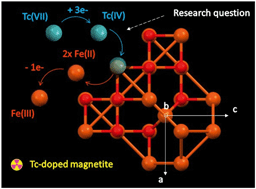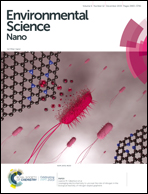The abiotic reductive removal and subsequent incorporation of Tc(iv) into iron oxides: a frontier review
Abstract
This narrowly focused but deeply elaboraed review on the incorporation mechanisms of the technetium-99 (Tc) radioisotope into iron oxides and oxyhydroxides presents discussion on two main subjects: the predominant form of reduced Tc(IV) oxide in iron oxidation products; and Fe(II)/Fe(III) substitution with Tc(IV) in magnetite lattices. Detailed analysis of the most relevant studies on abiotic Tc reduction by iron oxides and oxyhydroxides is given in support of the first subject, and a comparative review of EXAFS results is presented to scrutinize the mechanism of Tc(IV) incorporation into magnetite. Considering the risks related to the environmental mobility of radiological materials, e.g. Tc (a highly mobile beta emitter under aerobic conditions), the possibility of the sequestration and immobilization of Tc into lattices of iron minerals has been intensively investigated, but several discrepancies exist between different studies. This review systematizes the main studies conducted on the topic and addresses the limitations of common premises, e.g., the importance of atomic radii similarities for substitution mechanisms, and the ambiguity of EXAFS interpretations relating to iron oxides and oxyhydroxides.



 Please wait while we load your content...
Please wait while we load your content...
